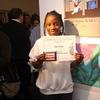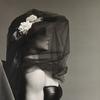American Perspectives: Stories from the American Folk Art Museum Collection
- NEW YORK, New York
- /
- February 12, 2020
The exhibition American Perspectives: Stories from the American Folk Art Museum Collection will open on February 11, 2020, at the American Folk Art Museum (AFAM) (2 Lincoln Sq., Columbus Ave. at W. 65th St.). It will be on display through May 31, 2020, and will showcase some seventy stellar works, all carefully culled from the museum’s collection by Stacy C. Hollander, former deputy director and chief curator of AFAM. Beginning in 2021, the exhibition will travel to additional venues in the United States.
“The artworks on view in American Perspectives will reveal multiple narratives,” said Jason T. Busch, director of the museum. “Stacy’s research has led to new discoveries about our collection and builds on the deep level of scholarship that is closely associated with her work as a curator. With Stacy’s engaging organization, visitors will see these objects in a new light.”
Curator Stacy C. Hollander commented, “Beautiful, diverse, and truthful, the works on view will illuminate the thoughts and experiences of individuals with an immediacy that is palpable and unique.”
Divided into four sections, the exhibition includes paintings, needlework, pottery, quilts, and sculpture. Artworks in the exhibition respond to such themes as nationhood, freedom, immigration, tolerance and intolerance, opportunity, and legacy, and offer firsthand testimony to chapters in the unfolding and ongoing story of the United States.
Among the works in the exhibition are:
Jug by David Drake (c. 1800–c.1870). Drake, an enslaved person until Emancipation following the Civil War, lived at a time when it was unlawful to teach slaves to read and write. Yet, his history has been partially recovered, in large part because he embedded his sentiments through his name, dates, and poems inscribed into utilitarian pots intended to store food and drink, including the jug on view.
Portrait of Frank Peters by Joseph P. Aulisio (1910–1974). Born in Old Forge, Pennsylvania, to Italian immigrants, Aulisio started Lease Dry Cleaners, where he employed Frank Peters as a tailor. The portrait is a remarkably unvarnished study of the architecture of flesh. Folds in Peters’ face appear both soft and hard, like molded plastic. Each gnarled knuckle and vein in his hands is delineated, testifying to his work as a tailor, and reinforced by the tape measure that he hugs fast against his body.
Crazy Trousseau Robe by Emma Rebecca Cummins Blacklock Snively Crosier Pauling (1848–1923). Cummins lived a large life, belied by the dainty trousseau robe fashionable during the late nineteenth century. She was married four times, divorced twice, and worked as one of the first female railroad telegraphers in the American West.
Freedom Quilt by Jessie B. Telfair (1913–1986). The concept of a freedom quilt can be traced at least as far back as the Civil War, when women were urged to “prick the slaveowner’s conscience” by embroidering antislavery slogans and images into their needlework. As a result of attempting to register to vote, Telfair lost her job as a cook at Helen Gurr Elementary School in Parrott, Georgia. She had learned to quilt from her mother, and after the trauma of losing her job, members of SNCC encouraged her to use her talent to frame a response to these overwhelming events.
Outer Row Jumper Horse by Charles Carmel (1865–1931). In 1883, Charles Carmel became one of a handful of Jewish woodcarvers who fled the intolerance of Eastern Europe to find religious freedom and unlikely success in American as carvers of joyful and magical carousel animals for the burgeoning amusement industry.
Mother Sister May Have Sat in That Chair When She Lived in This House Before Me by Jean-Marcel St. Jacques (b. 1972). In his series of “wooden quilts,” St. Jacques rehabilitates the ugliness of Hurricane Katrina. Using wood reclaimed from his damaged home and others in the Treme neighborhood of New Orleans, he pieces together expanses of wood, nails, and antique hardware on plywood wood to tell a story of endurance and beauty emerging from devastating events.
Related Programs: A range of programs, tours, and performances has been organized to complement the exhibition. Please check the museum website for a full schedule.
A panel discussion, Encompassing America: Identity, Immigration, and Museums¸ is scheduled for April 14. Speakers will present on how immigration has shaped our national identity and the implications for museums as they expand who is included in their American Art installations.
On May 4, the inaugural Elizabeth and Irwin Warren Folk Art Symposium will bring together scholars from a variety of disciplines. This day-long symposium will highlight and examine objects and historical events depicted in American Perspectives.
On February 25, teaching artist Elena Kanagy-Loux will lead a discussion about the history of lacemaking using examples found in nineteenth-century portraits, followed by a workshop in which students will learn to wind bobbins, set up their pillow, and work the foundational stitch of bobbin lace, known as cloth stitch or linen stitch, to create a little sampler in cotton thread.
On March 7, April 7, and May 2, the free Families and Folk Art program will introduce children and their caregivers to folk art through interactive discussion-based tours. An art-making activity inspired by exhibition objects is included.
On March 19, teaching artist David Barnett will discuss the vanishing art of hand-painted signs in New York City, followed by a hand-painting workshop using both freehand and transfer techniques.
On April 22, contemporary artist Cheryl Pope will discuss her use of text and textiles and question issues of identity, history, and power, while exploring themes in American Perspectives.
Performances during Free Music Fridays (5:30 PM – 7:30 PM, weekly) and Jazz Wednesdays (2 PM – 3 PM, weekly) will be connected to themes in the exhibition. The new season of Free Music Fridays begins on February 21.
The exhibition will be featured on the AFAM website as well as on Facebook, Instagram, and Twitter using the hashtag #AmericanPerspectives.

100x100_c.jpg)






![Peter Paul Rubens (Flemish, 1577–1640), After Titian (Tiziano Vecelli) (Italian [Venetian], c. 1488–1576), Rape of Europa, 1628–29. Oil on canvas, 71 7/8 x 79 3/8 in. Peter Paul Rubens (Flemish, 1577–1640), After Titian (Tiziano Vecelli) (Italian [Venetian], c. 1488–1576), Rape of Europa, 1628–29. Oil on canvas, 71 7/8 x 79 3/8 in.](/images/c/e2/2e/Jan20_Rape_of_Europa100x100_c.jpg)







